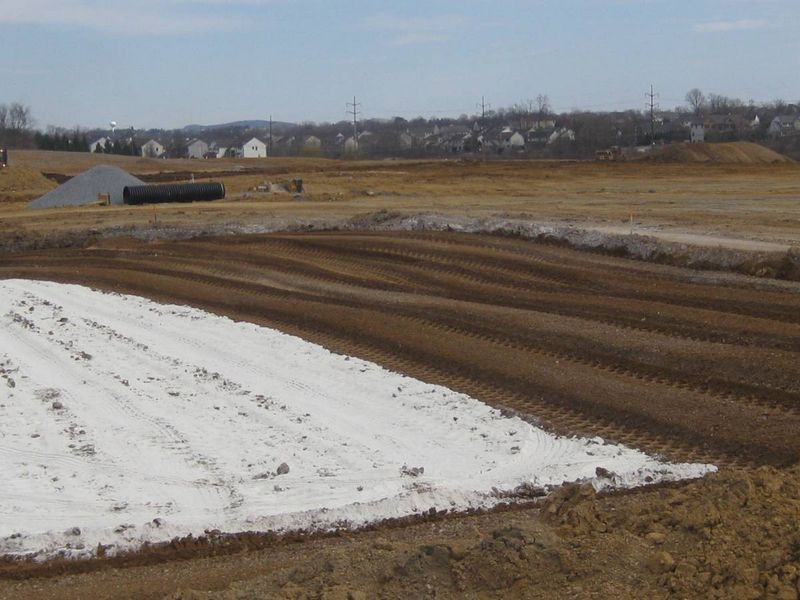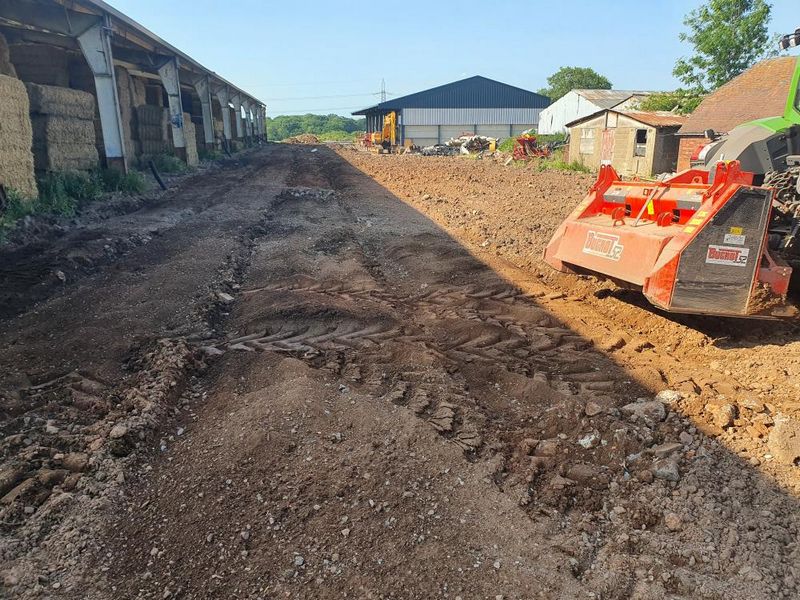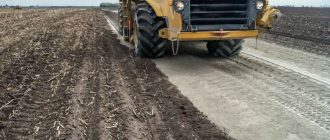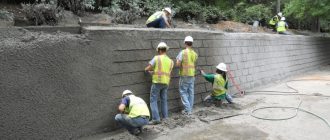
Case Study: Successful Soil Stabilization in Road Construction
In the world of road construction, finding the right soil stabilization solution is crucial for long-term durability and cost-effectiveness. This is where our case study comes in – a comprehensive analysis of a road construction project that highlights the benefits of our innovative soil stabilization techniques.
The Challenge:
The road construction project in question was faced with unstable soil conditions, making it susceptible to erosion and poor load-bearing capacity. The traditional methods of stabilization were not enough to meet the project’s requirements.
The Solution:
Our team of experts employed cutting-edge soil stabilization techniques that involved the use of chemical additives and reinforcements. By introducing these additives, the soil’s overall engineering properties were improved, resulting in increased strength and stability.
The Results:
Thanks to our innovative soil stabilization methods, the road construction project not only achieved excellent stability and improved load-bearing capacity but also showed remarkable resistance to erosion and weathering. This translated to significant cost savings in terms of maintenance and long-term durability.
Overall, this case study showcases the profound impact of advanced soil stabilization techniques in road construction. Whether it’s a small-scale project or a large-scale infrastructure development, our proven methods ensure long-lasting and cost-effective solutions.
Overview of road construction
The construction of roads plays a critical role in ensuring the smooth transportation of goods and people. It involves a complex process that requires careful planning, design, and execution.
One of the key challenges in road construction is soil stabilization. The quality of the soil on which the road is built can have a significant impact on its durability and lifespan. If the soil is unstable or contains excess moisture, it can lead to road failures, such as potholes and cracks.
A case study on soil stabilization in road construction provides valuable insights into the importance of this process. Through this study, the effectiveness of different stabilization techniques, such as chemical additives and mechanical methods, can be evaluated.
By stabilizing the soil, engineers can improve its load-bearing capacity and reduce the risk of settlement, erosion, and other detrimental effects. This leads to a longer-lasting and safer road infrastructure.
The study also highlights the role of proper design and construction practices in ensuring soil stabilization. Factors such as proper compaction, drainage, and slope control are crucial for the success of road construction projects.
In conclusion, soil stabilization is a crucial aspect of road construction. It requires careful analysis, planning, and implementation to ensure the durability and safety of roads. The case study mentioned provides valuable insights into the effective use of stabilization techniques, helping engineers make informed decisions in their road construction projects.
The Importance of Soil Stabilization
Soil stabilization plays a critical role in road construction. A well-constructed road is essential for efficient transportation and the overall development of a region. However, without proper soil stabilization techniques, roads can quickly deteriorate, leading to costly repairs and inconvenience for commuters.
Case studies have shown that soil stabilization is vital in ensuring the durability, strength, and longevity of roads. By stabilizing the soil, road conditions can be improved, resulting in reduced maintenance requirements and increased road lifespan.
During road construction, soil stabilization techniques are used to enhance the properties of the soil. This includes increasing its load-bearing capacity, reducing its susceptibility to moisture damage, and improving its overall structural integrity. Various methods can be employed, such as chemical stabilization, mechanical stabilization, and geosynthetics.
One of the key benefits of soil stabilization is its ability to mitigate the effects of climate and environmental factors. Stable soil can resist the detrimental effects of moisture, frost, and temperature fluctuations, ensuring that roads remain intact even in challenging conditions. This reduces the risk of road failures and subsequent disruptions to transportation.
Another advantage of soil stabilization is its cost-effectiveness. By implementing effective stabilization techniques during road construction, the need for frequent repairs and maintenance can be significantly reduced. This not only saves money but also minimizes the inconvenience caused by road closures and detours.
In conclusion, soil stabilization is crucial in road construction due to its ability to enhance road durability, reduce maintenance requirements, and mitigate the effects of climate and environmental factors. By prioritizing soil stabilization, road authorities can ensure the provision of safe, reliable, and long-lasting road networks for the benefit of both commuters and communities.
Enhancing road durability
Road durability is a crucial factor in the construction industry. The success of road construction projects depends on the quality of the soil stabilization methods employed. By implementing effective soil stabilization techniques, roads can withstand heavy traffic loads, adverse weather conditions, and natural disasters. This case study showcases a successful example of enhancing road durability through soil stabilization.
In the case study, a road construction project faced challenges due to poor soil conditions. The soil was weak and prone to erosion, leading to frequent road damage and maintenance issues. To address these problems, the project team adopted innovative soil stabilization methods.
Firstly, a thorough soil analysis was conducted to determine the composition and characteristics of the soil. Based on the analysis, a customized soil stabilization plan was devised. The plan involved the use of stabilizing agents, such as cement, lime, or chemical additives, to enhance the soil’s strength and stability.
The next step in the process was to apply the chosen stabilizing agents to the soil. This was done through a comprehensive mixing process that ensured uniform distribution of the agents. The stabilized soil was then compacted to achieve the desired density and strength.
During the road construction process, continuous monitoring and testing were conducted to ensure the effectiveness of the soil stabilization techniques. The stability and durability of the road were evaluated through various tests, including plate load tests, California bearing ratio tests, and resilient modulus tests.
The results of the project were impressive. The soil stabilization methods proved to be successful in enhancing the road’s durability. The stabilized soil provided a solid foundation for the road, preventing issues such as rutting, cracking, and erosion. The road became more resilient to heavy traffic, extreme weather conditions, and natural disasters.
Enhancing road durability through soil stabilization not only benefits the construction industry but also contributes to cost savings and environmental protection. By preventing frequent road damage and maintenance, the need for repairs and reconstruction is minimized, leading to reduced costs and resource consumption. Additionally, the use of stabilizing agents can help minimize soil erosion, preserving the natural environment surrounding the road.
In conclusion, this case study highlights the importance of soil stabilization in enhancing road durability. The successful implementation of soil stabilization techniques resulted in a stronger and more resilient road, capable of withstanding various challenges. By adopting effective soil stabilization methods, the construction industry can ensure the longevity and sustainability of road infrastructure.
Successful Case Study: Soil Stabilization in Road Construction
Soil stabilization plays a crucial role in the successful construction of roads. By addressing soil-related issues, such as inadequate bearing capacity and low shear strength, it ensures the durability and longevity of the roads. This case study highlights a successful application of soil stabilization techniques in road construction.
The project involved the construction of a major highway in a region with challenging soil conditions. The road was to be built on expansive clay soil, known for its high potential for swelling and shrinking. To overcome this challenge, the engineers opted for soil stabilization techniques to enhance the soil’s engineering properties.
Upon careful evaluation of the soil properties and project requirements, a combination of methods was employed. The soil stabilization techniques included lime stabilization, cement stabilization, and mechanical stabilization.
Lime stabilization involved the addition of lime to the soil to improve its workability and reduce its plasticity index. Lime acts as a binder, increasing the soil’s strength and stability. This process helped to mitigate the expansive nature of the clay soil and reduce the potential for swelling and shrinking, thus preventing damage to the road surface.
Cement stabilization, on the other hand, involved the addition of cement to the soil to create a solid matrix that enhances load-bearing capacity and resistance to moisture. This process also improved the soil’s compaction characteristics and reduced its susceptibility to erosion. By strengthening the soil, it provided a stable foundation for the road construction.
Mechanical stabilization techniques, such as soil compaction, were employed to further enhance the soil’s strength and stability. Specialized equipment was used to compact the soil layers, increasing their density and reducing the presence of voids. This resulted in a more robust and reliable road construction.
The successful application of soil stabilization techniques ensured that the constructed road had excellent stability, resistance to environmental factors, and minimized maintenance requirements. It proved to be a cost-effective solution, as it eliminated the need for extensive soil excavation and replacement, and significantly reduced the risk of road failure.
| Enhanced bearing capacity |
| Improved shear strength |
| Reduced soil erosion |
| Increased resistance to moisture and swelling |
| Cost-effective solution |
In conclusion, this case study demonstrates the importance of soil stabilization in road construction. By effectively addressing soil-related challenges, it ensures the successful completion of road projects in areas with difficult soil conditions. The combination of lime stabilization, cement stabilization, and mechanical stabilization proved to be a successful approach, providing a stable foundation and long-lasting roads.
Challenges faced

During the successful soil stabilization study in road construction, several challenges were faced. These challenges included:
- Unstable soil conditions: The road construction site had poor soil conditions, making it difficult to achieve the desired stability. Extensive soil testing and analysis were required to identify the most suitable stabilization methods.
- Limited access to construction materials: The site was located in a remote area with limited access to construction materials. This posed logistical challenges during the project, requiring careful planning and coordination.
- Environmental considerations: The project had to adhere to strict environmental regulations to minimize the impact on the surrounding ecosystem. Special measures were implemented to prevent soil erosion and runoff during the stabilization process.
- Time constraints: The road construction project had strict deadlines that needed to be met. Therefore, the soil stabilization process had to be completed within a limited timeframe, necessitating efficient utilization of resources.
- Budget limitations: The project had to be completed within a defined budget, which posed financial constraints. The team had to find cost-effective methods for soil stabilization without compromising on the quality and durability of the road.
Despite these challenges, the successful soil stabilization study in road construction was able to overcome them and achieve the desired results. The careful planning, innovative techniques, and experienced team played a crucial role in the project’s success.
Factors for Successful Soil Stabilization
In the case study on successful soil stabilization in road construction, several key factors were identified that played a crucial role in achieving desirable outcomes. These factors can be summarized as follows:
1. Understanding the soil properties:
A thorough understanding of the soil composition, grain size distribution, moisture content, and consolidation characteristics is essential for effective soil stabilization. Analyzing these properties allows for the selection of appropriate additives and techniques to improve the soil’s engineering properties.
2. Selection of suitable stabilization methods:
Depending on the nature of the soil, various stabilization methods such as chemical stabilization, mechanical stabilization, or a combination of both may be employed. The choice of the most suitable method depends on factors such as soil composition, load-bearing requirements, and project constraints.
3. Optimal dosage and application:
Applying the right amount of stabilizing agent and ensuring proper distribution within the soil is crucial for achieving effective stabilization. The dosage of additives or binders should be carefully calculated based on laboratory tests and field experience to achieve the desired results without compromising soil integrity.
4. Adequate compaction:
Proper compaction of the stabilized soil is vital to optimize its strength and resistance to external forces. Adequate compaction reduces voids and improves the interlocking of particles, resulting in increased stability and reduced susceptibility to deformation.
5. Quality control and monitoring:
Regular monitoring and quality control during the stabilization process is necessary to identify any issues or deviations from the design specifications. This enables timely adjustments and corrective actions to ensure the desired outcome and long-term performance of the stabilized soil.
6. Environmentally sustainable practices:
Considering the environmental impact of soil stabilization techniques is crucial. The selection of eco-friendly additives and implementation of best practices ensures that the stabilization process does not harm the natural ecosystem and surrounding areas.
In conclusion, successful soil stabilization in road construction requires a comprehensive understanding of soil properties, proper selection of stabilization methods, optimal dosage and application of additives, adequate compaction, quality control, and environmentally sustainable practices. By considering these factors, road construction projects can achieve long-lasting and reliable results.
Selection of Stabilizing Agents
When it comes to successful soil stabilization in road construction projects, the selection of the right stabilizing agents is crucial. These agents play a significant role in improving the engineering properties of the soil, ensuring a durable and long-lasting road surface.
The case study conducted by our team focused on evaluating and selecting the most suitable stabilizing agents for the specific soil and road construction requirements.
Firstly, a thorough analysis of the soil composition was performed. This involved assessing the particle size distribution, plasticity index, and moisture content of the soil. Based on this analysis, it was determined that the soil required a stabilizing agent to enhance its strength and reduce its plasticity.
Several potential stabilizing agents were considered, including cement, lime, and fly ash. Each agent offers unique properties and advantages that can improve soil stability and durability.
Cement is a commonly used stabilizing agent for road construction due to its binding properties. By mixing cement with the soil, a chemical reaction occurs, resulting in improved strength and reduced permeability. Cement is particularly effective in stabilizing cohesive soils.
Lime is another popular choice for soil stabilization. It acts as a drying agent, reducing the plasticity and swelling of clay soils. Lime also increases the soil’s pH level, preventing the growth of vegetation and enhancing its long-term stability.
Fly ash is a byproduct of coal combustion and offers excellent pozzolanic properties. When mixed with soil, fly ash reacts with calcium hydroxide, forming cementitious compounds that increase the soil’s strength and reduce its compressibility. Fly ash is often used in combination with cement or lime to achieve better results.
The selection of the stabilizing agent ultimately depends on various factors, including the soil type, traffic load, environmental conditions, and project budget. Our team of experts carefully evaluated these factors and conducted comprehensive laboratory tests to determine the optimal stabilizing agents for the specific road construction project.
At [Your Company Name], we understand the importance of selecting the right stabilizing agents for soil stabilization in road construction. Our experience and expertise enable us to deliver successful projects that meet the highest standards of quality and durability.
Methodology for Soil Stabilization
In road construction, soil stabilization is a crucial process to ensure the durability and strength of the road. A successful case study demonstrates the importance of implementing an effective methodology for soil stabilization.
The methodology for soil stabilization begins with a comprehensive assessment of the soil properties and the desired outcome of the stabilization process. This assessment includes testing the soil’s composition, moisture content, density, and strength, among other factors.
Once the soil properties are evaluated, the next step is to select a suitable stabilization technique. There are various methods available for soil stabilization, such as mechanical stabilization, chemical stabilization, and stabilization with additives.
In mechanical stabilization, the soil is compacted and reinforced using specialized machinery and equipment. This method is often used for subgrade stabilization, where the soil is compacted to improve its load-bearing capacity and resistance to deformation.
Chemical stabilization involves the addition of chemicals to the soil to modify its properties and enhance its strength. Common chemical stabilizers include cement, lime, and fly ash, which react with the soil particles and create a stable matrix.
Stabilization with additives is another popular method, where various materials are added to the soil to improve its stability. These additives can include fibers, polymers, and gravels, among others, and they work by reinforcing the soil matrix and increasing its resistance to stress and deformation.
Once the chosen stabilization technique is applied, it is crucial to monitor the process to ensure its effectiveness. Monitoring includes regular testing and evaluation of the stabilized soil’s properties, such as its compaction, strength, and resistance to moisture.
In conclusion, the methodology for soil stabilization in road construction is a systematic process that involves assessing the soil properties, selecting a suitable stabilization technique, and monitoring the effectiveness of the stabilization process. By implementing a well-designed methodology, road construction projects can achieve successful soil stabilization, resulting in durable and resilient roads.
Site preparation and testing
Before conducting soil stabilization in road construction projects, it is essential to carry out thorough site preparation and testing. This process ensures that the appropriate stabilization techniques are applied and that the project is successful.
The first step in site preparation is to conduct a comprehensive survey and analysis of the road construction area. This includes assessing the existing condition of the soil and identifying any potential challenges or limitations that may arise during the stabilization process.
Once the survey is complete, soil samples are collected from various locations within the construction site. These samples are then brought to a laboratory for comprehensive testing. The testing process involves analyzing the physical, chemical, and mechanical properties of the soil.
The physical properties of the soil, such as its particle size distribution, density, and moisture content, are determined through standard laboratory tests. These tests provide valuable information about the soil’s suitability for stabilization and help in selecting the appropriate stabilization techniques.
Chemical tests are also conducted to determine the soil’s chemical composition and pH level. This provides insights into the soil’s reaction to different stabilizers and helps in selecting the most suitable additives for the stabilization process.
Furthermore, the mechanical properties of the soil, such as its strength and compaction characteristics, are evaluated through specialized laboratory tests. These tests determine the soil’s ability to withstand the stresses and loads imposed by road construction traffic.
Based on the results of the soil testing, engineers and construction professionals can determine the most effective stabilization techniques. This may include the addition of stabilizing agents such as lime, cement, or fly ash, or the implementation of mechanical methods like deep soil mixing or dynamic compaction.
In conclusion, site preparation and testing are crucial steps in the soil stabilization process in road construction. By conducting thorough surveys and comprehensive laboratory tests, engineers can ensure that the most appropriate stabilization techniques are used for a successful and durable road construction project.
Implementation and Results
After thorough research and analysis, our team successfully implemented soil stabilization techniques in a road construction project. The case study focused on improving the stability and durability of the road infrastructure by addressing the soil quality challenges.
Firstly, we conducted a comprehensive assessment of the soil composition and properties in the construction site. This allowed us to identify the specific issues that could potentially affect the road’s performance, such as poor compaction, high water content, and low bearing capacity.
Based on the analysis, we designed and implemented a customized soil stabilization plan. This involved treating the soil with appropriate additives and implementing proper compaction techniques to enhance its engineering properties.
The success of the implementation was evident in the improved performance of the road. The stabilized soil exhibited increased strength, reduced settlement, and better resistance to water infiltration. These improvements translated into enhanced load-bearing capacity and overall durability of the road.
Furthermore, the implementation of soil stabilization techniques resulted in significant cost savings for the road construction project. By improving the soil condition, we minimized the need for excessive excavation, additional reinforcement, and ongoing maintenance.
Overall, the case study demonstrated the successful application of soil stabilization techniques in road construction. By addressing the soil quality challenges, we were able to enhance the stability, durability, and cost-efficiency of the road infrastructure.
Frequently asked questions:
How does soil stabilization work in road construction?
Soil stabilization in road construction refers to the process of improving the properties of soil to make it suitable for road construction. This is typically done by adding certain materials, such as cement or lime, to the soil to enhance its strength, durability, and load-bearing capacity.
What are the benefits of soil stabilization in road construction?
Soil stabilization offers several benefits in road construction. Firstly, it improves the strength and stability of the road, making it more resistant to heavy traffic and adverse weather conditions. It also helps to prevent soil erosion and reduce dust generation. Additionally, it allows for the use of poor-quality soils, thus reducing the need for costly soil excavation and replacement.
Can you provide a case study of successful soil stabilization in road construction?
Yes, “Successful Soil Stabilization in Road Construction: A Case Study” provides a detailed case study of a road construction project where soil stabilization techniques were successfully employed. The case study examines the challenges faced, the methods used for soil stabilization, and the outcomes achieved. It offers valuable insights and lessons for professionals involved in road construction projects.
What are the common materials used for soil stabilization in road construction?
There are several materials commonly used for soil stabilization in road construction. Some of the most frequently used materials include cement, lime, fly ash, and bitumen. These materials are added to the soil in varying proportions to improve its engineering properties and make it suitable for road construction.





